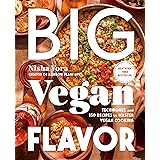Have you ever found yourself caught in the endless cycle of dieting? You commit to a new plan, perhaps a popular one promising rapid results, only to feel restricted, fatigued, and ultimately, defeated when the weight inevitably creeps back on. It’s a common story, and if you’ve experienced it, you’re certainly not alone. The video above unpacks the truth behind sustainable fat loss, offering a refreshing, science-backed approach that cuts through the noise of misinformation. It highlights that the secret to losing fat for good isn’t about extreme restriction or cutting out entire food groups; it’s about understanding your body’s needs and building habits that last.
This comprehensive guide complements the insights shared in the video, diving deeper into the principles of effective nutrition for a lasting transformation. We’ll explore why traditional diets often fail and how to cultivate a practical, enjoyable approach to eating that promotes not just fat loss, but overall health and well-being. Get ready to discover the true power of a balanced, science-backed fat loss diet.
The Undeniable Foundation: Creating a Calorie Deficit for Sustainable Fat Loss
Firstly, the cornerstone of any successful fat loss diet, regardless of its name or specific rules, is a fundamental concept: the calorie deficit. This means consuming fewer calories than your body expends each day. While this sounds straightforward, the challenge often lies in achieving and maintaining this deficit without feeling deprived or constantly hungry. The video emphasizes this core principle, but then cleverly flips the script on how most people approach it.
Instead of immediately thinking about what to cut out, the most effective strategies often begin by focusing on what to *add* more of. This counter-intuitive approach leverages nutritional science to naturally reduce overall calorie intake, making the deficit feel less like a struggle and more like an effortless shift. By strategically incorporating specific macronutrients, you can create a feeling of fullness and satisfaction that makes adhering to your fat loss goals significantly easier.
Fueling Your Body Right: The Power of Protein for Fat Loss and Muscle Preservation
The first and arguably most critical food group to prioritize for a successful fat loss diet is protein. Far from being just for bodybuilders, protein plays a vital role in satiety, metabolism, and preserving lean muscle mass during weight loss.
More Protein, Less Calories: The 2005 Study That Changed Everything
Consider a pivotal study published in 2005 that dramatically illustrated protein’s impact on calorie intake and fat loss. Participants in this study made only one change: they doubled their usual protein intake. The astonishing result? Without even realizing it, they naturally began consuming approximately 440 fewer calories per day. Over a 12-week period, this simple dietary adjustment led to an impressive average fat loss of nearly 10 pounds. This finding underscores protein’s remarkable ability to promote satiety, helping individuals feel fuller for longer and subsequently reduce their overall caloric consumption without conscious effort.
The reason for this powerful effect is multifaceted. Protein requires more energy to digest than carbohydrates or fats, a phenomenon known as the thermic effect of food (TEF). This means a portion of the calories from protein are “burned” just in the process of digestion. More importantly, protein has a profound impact on hunger hormones, signaling to your brain that you are full and satisfied, thereby curbing cravings and preventing overeating.
Beyond satiety, adequate protein intake is crucial for muscle preservation. When you’re in a calorie deficit, your body can break down either fat or muscle for energy. Consuming sufficient protein, ideally at least 0.8 grams per pound of your body weight per day (approximately 1.6-1.8 grams per kilogram), sends a powerful signal to your body to spare your precious muscle tissue and prioritize burning fat for fuel. This is why high-protein diets are not only superior for fat loss during the diet phase but also highly effective at preventing fat regain once the diet concludes, as lean muscle mass helps maintain a higher metabolic rate.
But don’t fall into the trap of thinking you’re limited to bland chicken breast for every meal. Variety is key for adherence. Protein comes in many delicious forms: lean meats like beef, pork, and turkey; dairy products such as Greek yogurt and cottage cheese; eggs; fish and seafood; and plant-based options like tofu, tempeh, lentils, and beans. For instance, 30 grams of protein could look like a medium chicken breast, a scoop of whey protein powder, a large serving of Greek yogurt, or a piece of salmon. Incorporating diverse sources ensures you enjoy your meals while meeting your protein targets.
Embracing Carbs: Energy, Performance, and Avoiding the “Crap” Feeling
Next, let’s tackle carbohydrates, a macronutrient often demonized in the diet world. The video shares a relatable anecdote about cutting carbs to lose weight, only to feel “like complete crap” with low energy and poor gym performance. This experience resonates with many who have attempted restrictive diets.
The Carb Conundrum: Water Weight vs. True Fat Loss
When you initially cut out carbs, you often experience a rapid drop in weight. However, this is largely due to water loss, not fat. Carbohydrates are stored in your muscles and liver as glycogen, and each gram of glycogen pulls about 3-4 grams of water with it. So, while the scale might show a lower number, you haven’t necessarily shed significant body fat. This early, misleading weight loss can be both motivating and incredibly frustrating when actual fat loss plateaus or doesn’t match the initial promise.
Carbohydrates are your body’s preferred and most efficient source of energy, especially during high-intensity exercise and for optimal brain function. Restricting them severely can lead to fatigue, irritability, and decreased physical performance. While the body can adapt to using other fuel sources (like fats or ketones), the research is clear: as long as you’re in a calorie deficit and consuming adequate protein, you will lose fat, regardless of your carbohydrate intake. The key is balance and smart choices.
For those who grew up with carbs as a staple, like the speaker’s Filipino heritage with rice, complete elimination is often unsustainable and culturally alienating. Instead of cutting out carbs entirely, a more effective strategy is to choose less processed, high-fiber carbohydrates that promote satiety and provide sustained energy. Examples include whole grains, fruits, and vegetables. If you tend to overeat, reducing portions of high-calorie, refined carbs can certainly help create a deficit. A practical strategy is to strategically time your carbohydrate intake, consuming the majority around your workouts when your body needs energy the most for performance and recovery, then adjusting portions for other meals based on your remaining calorie allowance.
Navigating Fats: The Calorie-Dense Necessity
Moving on, fats are the third macronutrient, and they often present a unique challenge in a fat loss diet due to their high caloric density. While protein and carbohydrates provide approximately 4 calories per gram, fats pack more than double that, at 9 calories per gram. This makes them incredibly easy to overeat without even realizing it.
Unmasking Hidden Fats and Making Smarter Swaps
Beyond the obvious culprits like desserts, deep-fried foods, and fatty snacks, the real danger often lies in “hidden fats” that silently inflate your calorie count. Salad dressings, mayonnaise, cooking oils, creamy sauces, butter, and even seemingly healthy foods like peanut butter can quickly add hundreds of calories to a meal. For instance, just a few spoonfuls of peanut butter can easily account for 200-300 calories, potentially throwing off your entire day’s calorie target if not accounted for. The video vividly illustrates this by showing what 200 calories of various common fatty condiments look like – often a much smaller portion than you’d expect.
However, just like with carbs, completely eliminating fats is not the answer. Healthy fats are essential for hormone production, nutrient absorption, and overall bodily functions. The goal is moderation and intelligent swaps. Consider opting for skim milk instead of full-cream dairy, using spray oil or measuring your cooking oil carefully, choosing leaner cuts of meat, and selecting lower-calorie salad dressings. These small adjustments can significantly reduce your caloric intake from fats without sacrificing flavor or nutritional benefits.
Furthermore, it’s important to remember that you don’t need to cut out every food you love. The speaker’s personal example of incorporating beloved donuts in moderation, or finding healthier versions of Filipino dishes, highlights the importance of making your fat loss diet enjoyable and sustainable. Finding ways to fit your favorite high-fat foods into your calorie budget, even occasionally, prevents feelings of deprivation and makes long-term adherence much more likely. Explore lower-calorie recipes for your favorites or simply practice strict portion control when indulging.
The Balanced Plate Concept: A Flexible Framework for Long-Term Success
Next up, it’s one thing to understand protein, carbs, and fats individually, but how do you practically apply this knowledge to your daily meals? The video introduces a powerful tool: the Balanced Plate concept. This approach contrasts sharply with the rigid, unsustainable nature of strict meal plans.
Why Strict Meal Plans Fail: Lessons from the 2021 Study
A 2021 study highlighted the pitfalls of overly strict meal plans. Participants were given a rigid, non-negotiable meal plan designed for a calorie deficit. While they achieved good short-term results, losing an average of 7 pounds of fat over 10 weeks, the success was fleeting. As soon as the diet ended, most participants rapidly regained the weight they had lost. This phenomenon illustrates a critical point: strict meal plans, while effective for short-term weight loss, often fail to teach individuals the sustainable habits and intuitive eating skills necessary for long-term weight management. They foster dependence on external rules rather than internal understanding.
The Balanced Plate concept, however, empowers you by providing a flexible framework. Instead of a rigid menu, it offers a visual guide for constructing nutrient-dense, satisfying meals. Here’s how it breaks down:
- One-Quarter Protein: Fill a quarter of your plate with a lean protein source. This ensures you’re getting enough of the muscle-sparing, satiety-boosting macronutrient we discussed earlier. Think chicken breast, fish, tofu, eggs, or lean ground beef.
- One-Half Vegetables and/or Fruits: Dedicate a full half of your plate to colorful vegetables and fruits. These are packed with fiber, vitamins, and minerals, providing volume and nutrients for very few calories. Examples include broccoli, spinach, bell peppers, berries, apples, or a mixed green salad.
- One-Quarter Carbs and/or Fats: The remaining quarter of your plate is where you strategically place your carbohydrates and healthy fats. This allows for flexibility based on your preferences and energy needs. Options might include brown rice, quinoa, whole grain bread, sweet potatoes, or a small serving of avocado or nuts.
The beauty of this concept lies in its adaptability. For breakfast, you might have eggs (protein) with whole-grain toast (carbs) and a side of fruit (carbs/fiber). Lunch could be extra lean ground beef (protein) with steamed vegetables (fiber/nutrients) and a serving of hummus (fats/carbs). This framework also extends to eating out. Instead of feeling restricted to a salad, you can consciously build or order a meal that roughly adheres to the Balanced Plate proportions, making healthy choices in various social settings much more manageable.
Separating Fact from Fiction: Supplements and Strategic Support
Beyond food, the world of fat loss supplements is often rife with exaggerated claims and marketing hype. The video cautions against the allure of “miracle pills” promising shortcuts to a shredded physique.
The Truth About Fat Burners and Effective Nutritional Gaps
Many so-called fat burners are, frankly, a waste of money. The speaker recounts spending hundreds on these products, only to find research confirming they are little more than glorified caffeine pills. While they might slightly increase your heart rate and thus burn a tiny amount of extra calories, their impact on meaningful fat loss is negligible at best. They exploit people’s desire for an easy fix, relying on aggressive marketing rather than genuine scientific efficacy.
However, it’s important to distinguish between ineffective “fat burners” and legitimate supplements that can fill nutritional gaps. While not directly “fat loss” tools, supplements like Omega-3 fatty acids, Vitamin D, and Zinc can contribute to overall health, which in turn supports a body that is better able to lose fat and function optimally. Omega-3s support heart and brain health, Vitamin D is crucial for bone health and immune function, and Zinc plays a role in metabolism and immune response. Addressing deficiencies in these areas can improve energy levels and overall well-being, indirectly supporting adherence to a healthy fat loss diet.
The Protein Shake Advantage: British Journal of Nutrition Study Insights
Amidst the sea of questionable supplements, there is one that truly stands out as a powerful tool for fat loss: protein powder. A study published in the British Journal of Nutrition powerfully illustrates its utility. Researchers put a group of subjects through a 4-week diet phase. Afterward, they split them into two groups: one added a 30-gram protein shake to their daily routine, while the other did not. The results were compelling: the protein shake group regained less fat after the diet was over and maintained a smaller waist circumference compared to the control group. This highlights protein powder’s role not just in initial fat loss, but crucially, in preventing fat regain.
For individuals who struggle to meet their daily protein requirements through whole foods alone, protein powder can be an invaluable, convenient, and cost-effective solution. Whey isolate is often recommended as the highest quality and most regulated form, offering a concentrated dose of protein with minimal fats and carbohydrates. While some premium brands might be pricier due to quality and protein content (like the 29 grams per scoop mentioned by the speaker), the investment is often worthwhile for its benefits in satiety, muscle preservation, and overall adherence to a fat loss diet. Whether it’s post-workout, as a snack, or incorporated into a meal, a protein shake can be a game-changer for hitting those crucial protein targets.
Beyond What You Eat: The “When” and “Where” of Your Meals
Beyond the macronutrients themselves, the “when” and “where” you eat can significantly influence your fat loss journey. These often-overlooked factors contribute to satiety, energy levels, and even how many calories you consume.
Optimizing Eating Frequency: Avoiding the Bottomless Pit
Many mistakenly believe that skipping meals or eating very lightly throughout the day is a surefire way to create a calorie deficit. The speaker shares his own experience with this, leading to feeling “like crap” and experiencing a “bottomless pit” stomach by the end of the day. This extreme hunger often results in overeating or bingeing, completely negating any calorie savings from earlier in the day.
The goal is to avoid ever reaching a state of extreme hunger, characterized by dizziness, low blood sugar, and an overwhelming desire to eat everything in sight. While popular diets like intermittent fasting (where you restrict eating to a specific window, e.g., 12 p.m. to 8 p.m.) can be effective for some – not because of any magical property, but because they can simplify adherence to a calorie deficit – they aren’t for everyone. Many find greater success and more consistent energy levels by eating more regularly, spreading 3-4 main meals throughout the day, roughly 3-4 hours apart, and incorporating 1-2 snacks (like fruit) between meals when hunger strikes. This approach helps stabilize blood sugar, manage hunger, and prevent the “bottomless pit” scenario.
Mindful Eating Environments: Lessons from the 2021 Food Environment Study
The environment in which you eat also plays a surprisingly significant role. A 2021 study that analyzed the food environments of over 1000 households found a strong correlation: eating meals in front of a TV was one of the strongest predictors of being overweight. This highlights the impact of distracted eating, where your attention is diverted from your food, leading to overconsumption and reduced satisfaction.
Furthermore, other intriguing studies have shown that slowing down your meal can profoundly affect hunger and potentially boost fat loss. Techniques like taking smaller bites, using chopsticks, or eating with smaller utensils can increase meal duration, allowing your body to register fullness signals more effectively. The speaker playfully recounts his mother’s excitement at him embracing cultural practices like eating rice with chopsticks at the table, emphasizing the positive impact of mindful eating habits.
While it’s perfectly fine to enjoy popcorn during a movie or watch a video during an occasional lunch break, making every meal a screen-time event can be detrimental. Cultivating a habit of mindful eating – savoring your food, paying attention to hunger and fullness cues, and eating in a calm environment – can be a powerful, yet simple, tool in your fat loss arsenal.
The Path to Lasting Change: Consistency, Adaptability, and Enjoyment
Finally, the most crucial aspect of any successful fat loss diet is sustainability. It’s not about how quickly you can lose weight, but how consistently you can maintain your progress over the long term.
Small, Consistent Wins Outperform Rapid, Unsustainable Losses
The video uses a great analogy: trying to keep up with a marathon runner’s pace overnight is unsustainable. Similarly, drastically changing your diet overnight often leads to burnout and failure. While experienced fitness enthusiasts might be able to shed fat quickly, for most people, making small, incremental changes yields far greater long-term success. Aiming to lose a modest half a pound of fat per week, consistently, is far more effective than losing a couple of pounds one week and regaining it all the next.
It’s also essential to acknowledge that setbacks are part of the journey. A “cheat meal gone wrong” or an entire day of less-than-ideal eating won’t derail your entire progress. One meal or even a day of indulgence is a minor blip; consistent poor habits are what cause problems. The key is to learn from these moments and get back on track without guilt or self-punishment. If you find yourself frequently straying from your fat loss diet, it’s often a sign that your current approach is too restrictive or unenjoyable, and adjustments are needed.
Finding Your Personalized Fat Loss Plan
Creating a diet you genuinely enjoy is paramount for long-term adherence. The speaker humorously admits his dislike for canned tuna despite its benefits, and his love for Filipino dishes like chicken adobo and kare-kare, which he always finds a way to fit into his plan. This personalizes the journey, emphasizing that there’s no single “best” food for fat loss; rather, it’s about finding foods that fit your preferences, culture, and budget, while still aligning with your overall calorie and macronutrient goals.
Tools like calorie calculators (such as the one mentioned at builtwithscience.com/calculator) can provide personalized calorie targets for faster or slower fat loss, helping you determine what’s realistic for your body and lifestyle. Experiment with recipes, explore different cooking methods, and discover high-protein, satisfying meals that you genuinely look forward to eating. Remember, a healthy fat loss diet doesn’t have to be expensive; the video even highlights the possibility of a ~$5/day meal plan. The ultimate goal is to craft a dietary approach that you can stick to indefinitely, making it a sustainable lifestyle rather than a temporary fix for losing fat.











